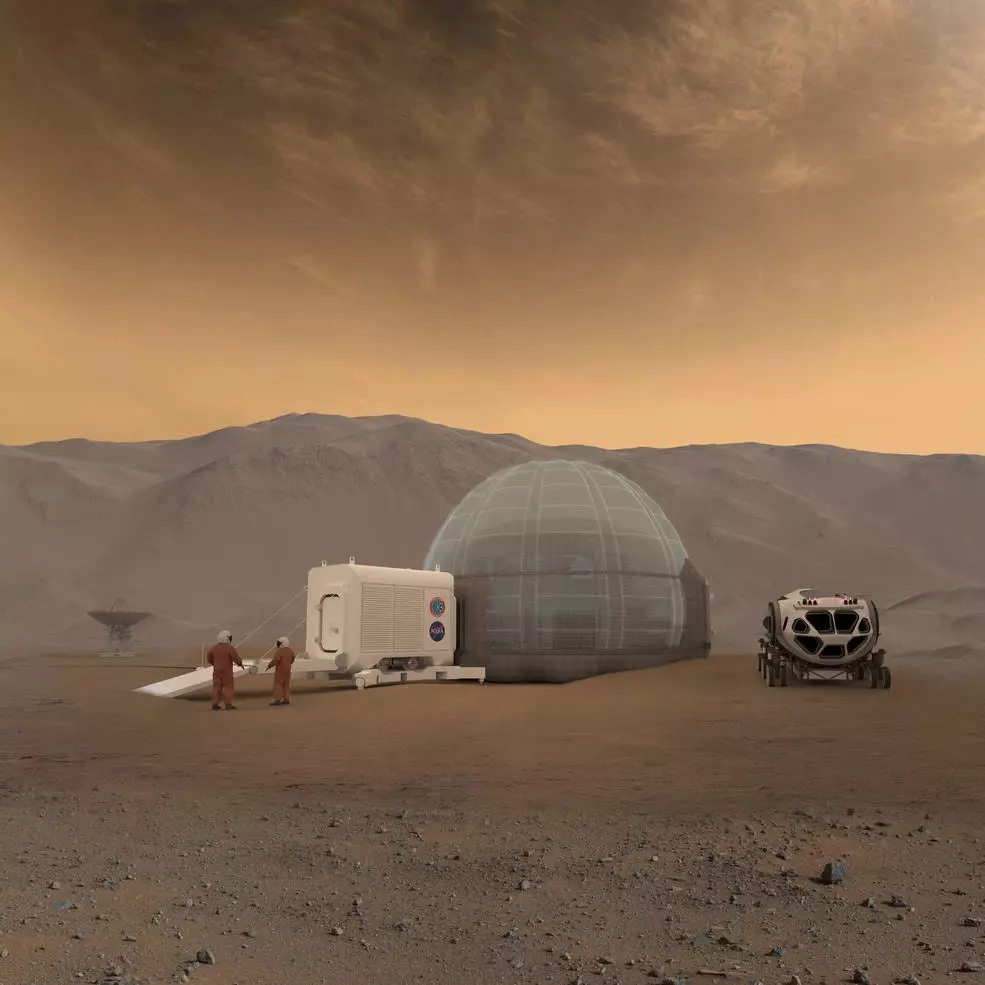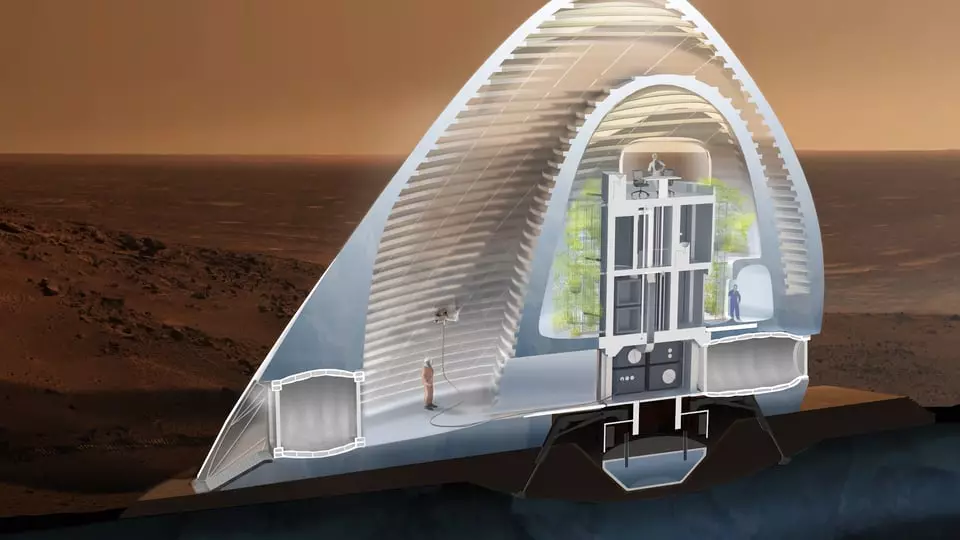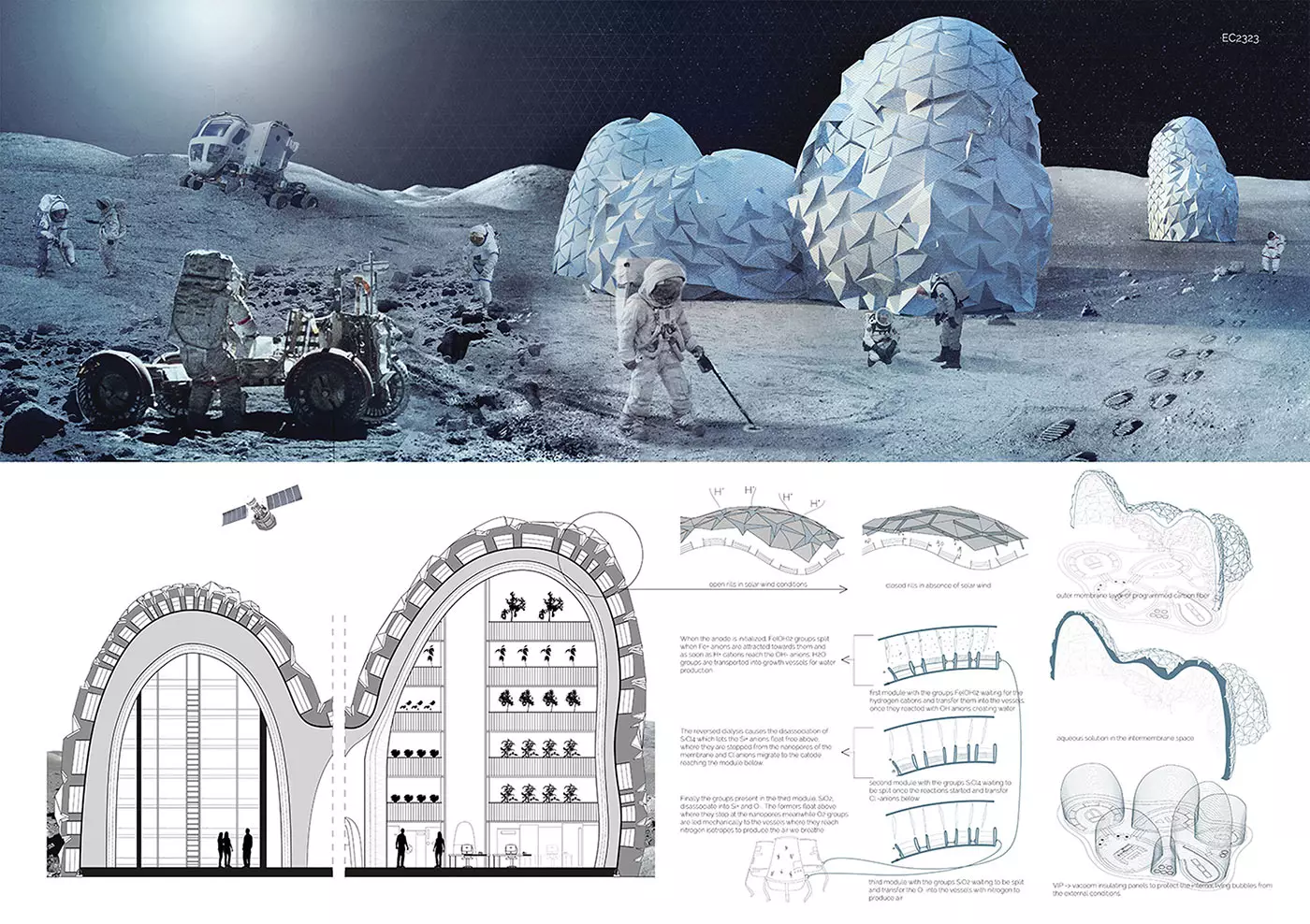
An artist creates a concept of home on Mars
There are already those who have made the calculations of what it would cost to establish a human colony on the red planet (about 30,000 million euros) and, according to the most optimistic forecasts, there are less than ten years left for man to step on the surface of Mars. At least, that's what Elon Musk himself hopes to achieve. Meanwhile, returning to the Moon appears on the horizon as another likely target of space agencies and some private companies.
Thus, it seems that the time is approaching to dream of a future, not too far away, in which space stays are a reality. In fact, NASA is already working on that possibility and organized a design contest in which participants could propose different models, materials and architectures to establish a colony on Mars.
However, the Martian habitat has some peculiarities that make any construction for human life invalid: minimum temperatures can reach 80 degrees Celsius below zero and the absence of an ozone layer like the terrestrial one means that the entire solar radiation reaches the surface, with the dangers that this entails.
The over 160 designs received by NASA for its Martian habitats competition had to take these characteristics into account. Now, the North American space agency has announced what could be the three best options to spend the night on Mars: robots, 3D printing and special materials are part of this likely recipe for space tourists.

Are we dreaming?
In fact, the winning design, made by the Team Space Exploration Architecture and Clouds Architecture Office of New York , is based on the use of ice as a construction material: his Ice Home is actually a large inflatable dome that would be installed on the Martian surface and would be surrounded by a 3D printed ice sheet and another of regolith, the mass of rocks and other geological material that can be found in the soil of the red planet.
All this assuming that, indeed, the northern hemisphere of Mars contains water and this is accessible to its first inhabitants. Solving this problem, the Ice Home model would protect residents and tourists from solar radiation and, in addition, the environment inside would allow human life without having to move around in space suits (and would even make it possible to grow plants inside it).
MARS ICE HOUSE from Mars Ice House on Vimeo .
LAVA AND ROBOTS
3D printing would also be the manufacturing method of the colony designed by the second team of this unique contest, Team Gamma . His project goes through the construction of printed modules protected from solar radiation by a layer of regolith that could house up to four inhabitants inside.
The singularity of this project is that it would not be astronauts who would install the habitat, but rather it would be preprogrammed robots those who would have everything ready before the arrival of the first humans on Mars. In addition, unlike the winner of the competition, this project raises the possibility of excavating so that the habitable space is not reduced to the Martian surface.
For its part, the acceptance of 3D printing as the most effective method when it comes to building buildings on the red planet is such that NASA has recently launched another design contest: it is the 3D Printed Habitable Challenge, which aims to have participants design the technology needed to create sustainable 3D printed habitats. In return, a $2.5 million prize is up for grabs ( about 2.3 million euros at the current exchange rate).
Precisely, NASA's third choice as the probable design of a human habitat on Mars makes recycling an architectural art for the first residents and tourists that the red planet receives. This is Team LavaHive, whose intention is to recycle materials (including the ships with which they reach Mars) to make them the first Martian homes.
Some parts of the ships would be combined with molten regolith and bonded to it with an adhesive material to ensure the construction was airtight. In this way, it would ensure that the Martian wind and the feared ultraviolet radiation from the Sun did not affect the first inhabitants and visitors to Mars. In addition, these structures would also have with habitable spaces both on the surface and below it.

An experience into the future
TO THE MOON
However, space agencies do not live only on Martian dreams today. Returning to the Moon is another of the objectives set for the medium term and, therefore, it is also necessary to imagine life and tourism on the Earth's satellite. To do this, another competition (organized in this case by the design magazine Eleven ) asked architecture studios to create structures in which it was possible to work, live, research and do tourism almost 400,000 kilometers away from Earth.
In this case, 3D printing also seems to be the preferred form of construction. So much so that the winning project, baptized as Testlab, bets on this system and on carbon fiber as a material when it comes to building a structure of various heights in which to house the first inhabitants of the Moon. An outer membrane inspired by origami it would protect the interior of the settlement from solar winds and, in fact, allow plants to grow inside.

Visions of Moontopia
Nevertheless , other participants in Moontopia, the challenge organized by Eleven, have gone far beyond simple settlements for pioneers who dare to spend weeks on the Moon and have designed true cities that, well located on the surface of the satellite, well created within of its craters, they could house up to 3,000 citizens. Of course, these cases highlighted by the architecture magazine are not exactly considered for the immediate future, but rather are the scenario that some imagine for the distant XXIII century.
In any case, it seems that the first wickers so that space tourism is a reality, with hotels on satellites and planets included , they are already knitting.
Follow @HojaDeRouter
Follow @alvarohernandec
